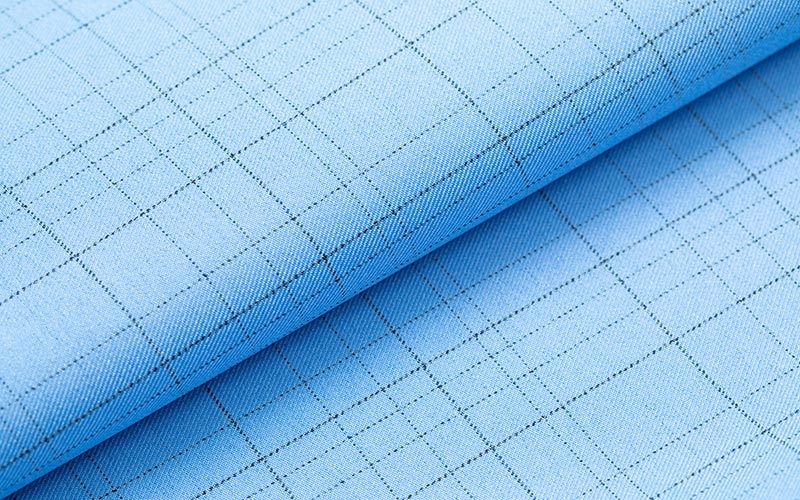
Como escolher tecido antiestático?
2023-11-09 15:11
Tecido antiestático é um tipo de material têxtil com características de prevenção de acúmulo e descarga eletrostática, amplamente utilizado nas áreas eletrônica, médica, biológica, óptica, aeroespacial, militar, entre outras. A seleção correta de tecidos antiestáticos é essencial para garantir a segurança de equipamentos e pessoas. Este artigo explica como escolher um tecido antiestático adequado às suas necessidades.
1. Determine os requisitos da aplicação
Primeiro, defina os requisitos da sua aplicação. Diferentes ambientes de aplicação podem exigir diferentes níveis de desempenho de tecidos antiestáticos. Considere os seguintes fatores:
Valor de resistência eletrostática: De acordo com as necessidades da aplicação, selecione o tecido com o valor de resistência eletrostática apropriado.
Resistência à lavagem: se você precisa lavar seu tecido com frequência, escolha um tecido antiestático com excelente resistência à lavagem.
Respirabilidade e conforto: considere o conforto do usuário, especialmente se usado por longos períodos. Alguns tecidos priorizam a respirabilidade e o conforto.
Resistência ao desgaste e durabilidade: Se sua aplicação requer umatecido antiestáticocom boa resistência ao desgaste, escolha um tecido com propriedades adequadas.
Proteção química: Se a aplicação exigir tecidos antiestáticos com resistência química, considere o nível apropriado de proteção.
2. Ver rótulos e especificações
Ao escolher umtecido antiestático, certifique-se de verificar atentamente o rótulo e as especificações do produto. Os rótulos geralmente fornecem informações importantes sobre as propriedades e características do tecido. Preste atenção às palavras no rótulo, como "ESD" ou "Anti-Static", para confirmar se o tecido possui propriedades antiestáticas.



3. Conheça o material
Tecidos antiestáticos geralmente são feitos de materiais misturados com fibras condutoras. Conhecer a composição do tecido é muito importante para escolher o tecido certo. Normalmente, os tecidos antiestáticos usam poliéster ou outras fibras sintéticas e adicionam fibras condutoras.
4. Medição de resistência
Se precisar determinar as propriedades antiestáticas do tecido com mais precisão, você pode usar um medidor de resistência para medir seu valor de resistência. O valor de resistência dos tecidos antiestáticos geralmente fica entre 10^6 e 10^9 ohms, dependendo do nível de desempenho.
5. Branding e certificação
Procure marcas respeitáveis e selos de certificação relevantes, que ajudem a confirmar a qualidade e a conformidade do produto. Alguns fabricantes indicam propriedades antiestáticas em seus produtos ou os certificam por meio de organismos de certificação.
6. Personalize as opções
Considere opções de personalização para tecidos, incluindo tamanhos, cores e bordados especiais para atender às necessidades de diferentes clientes.Tecidos ESD personalizadossão mais adequados para cenários de aplicação específicos.
7. Cuidados e manutenção
Por fim, aprenda a fazer a manutenção adequada do tecido antiestático escolhido para prolongar sua vida útil. Tecidos diferentes podem ter requisitos de manutenção diferentes, portanto, certifique-se de seguir as recomendações do fabricante.
Procurando por tecidos antiestáticos confiáveis ou soluções ESD personalizadas?
Entre em contato com nossa equipepara obter recomendações profissionais ou solicitar amostras de tecido adaptadas às necessidades da sua aplicação.












